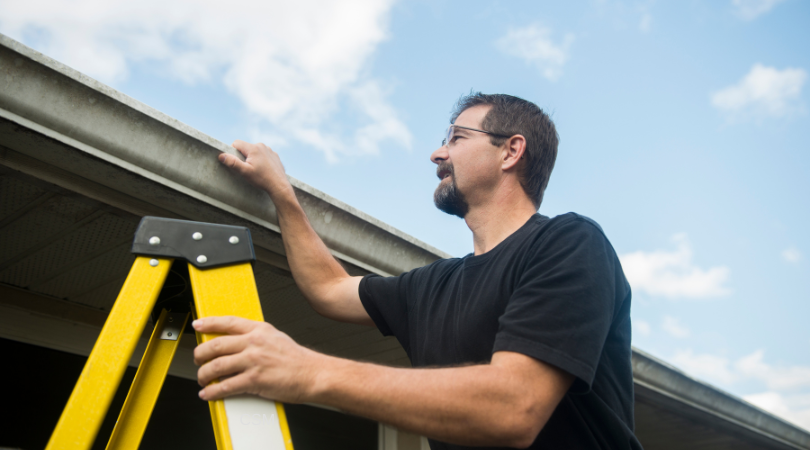Preparing your home for colder weather is a proactive way to prevent costly repairs and ensure a cozy and energy-efficient living space. Here is a comprehensive fall home maintenance checklist to help you get ready for winter.
Exterior
- Clean Gutters and Downspouts: Once the leaves have fallen, clear your gutters and downspouts of all debris. Clogged gutters can lead to water backup, which can damage your roof, siding, and foundation, and create dangerous ice dams in the winter.
- Inspect the Roof: From the ground (using binoculars if necessary), check your roof for any missing, cracked, or damaged shingles. Also, look for loose or damaged flashing around chimneys and vents.
- Seal Drafts: Check windows and doors for drafts. Use a lit stick of incense or a piece of tissue paper and hold it near the edges—if the smoke or paper moves, you have a leak. Seal gaps with caulk or weatherstripping to prevent heat loss and lower your energy bills.
- Winterize Outdoor Faucets and Sprinkler Systems: Turn off the water supply to all outdoor faucets and drain the remaining water from the lines to prevent frozen pipes. For sprinkler systems, you’ll need to “blow out” the lines using an air compressor to remove all water, as remaining water can freeze and cause pipes to burst.
- Repair Driveways and Walkways: Inspect concrete and asphalt surfaces for cracks. Freezing and thawing can expand existing cracks, so it’s a good idea to seal them before winter sets in.
- Store Outdoor Furniture: Clean and store your patio furniture, grills, and other outdoor equipment. This prevents damage from snow and ice and prolongs the life of your items.
- Prune Trees and Shrubs: Trim back branches that are close to your house, especially over the roof. Heavy snow and ice can cause branches to break and damage your home.
Interior
- Service Your HVAC System: Schedule an annual checkup with a professional HVAC technician. They can inspect your furnace, clean the system, and ensure it’s running safely and efficiently. This is crucial for preventing a breakdown when you need your heat the most.
- Change Furnace Filters: A clean air filter helps your furnace run more efficiently and improves indoor air quality. Replace disposable filters or clean reusable ones.
- Check Smoke and Carbon Monoxide Detectors: Test all smoke and carbon monoxide alarms and replace the batteries. This is an essential safety step, especially as you’ll be closing up your home for the winter.
- Clean the Fireplace and Chimney: If you have a wood-burning fireplace, have a professional chimney sweep inspect and clean it. Creosote buildup is a fire hazard. Make sure the damper is working properly.
- Reverse Ceiling Fans: Set your ceiling fans to spin clockwise on a low speed. Since heat rises, this motion will push the warm air that has collected near the ceiling back down into the room, which can help you feel warmer and save on heating costs.
- Clean and Inspect Humidifiers: If you use a humidifier during the dry winter months, clean it thoroughly to prevent the growth of mold or mildew. Change the filter if necessary.
- Clean Air Vents and Ducts: Give your air vents a thorough dusting or vacuuming. Consider a professional duct cleaning if it has been a while since your last one. This improves airflow and reduces allergens and dust in your home.
- Check for Rodent and Pest Entry Points: As the weather cools, critters will look for a warm place to nest. Walk around the exterior and interior of your home, looking for any small cracks, gaps, or holes where they might enter. Seal these with steel wool or caulk.
Image: Canva Pro

